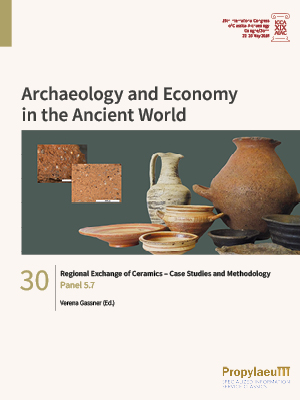
How to Cite
Identifiers
Published
Regional exchange of ceramics – case studies and methodology
Panel 5.7
Pottery vessels and other ceramic objects constitute important sources for issues of trade and exchange in Antique societies as they are available in great quantities and as their provenance often can be determined by archaeological or archaeometric methods. Most studies on the exchange of ceramics however concentrate on aspects of long-distance trade, as differences between wares and/ or types produced in different, far distant regions can be recognized more easily. This fact, together with the psychological fact of the greater attractiveness of these items, might have lead to an exaggerated perception of the amount of goods traded via the oversea trade in the archaeological record. In contrast to this, aspects of regional exchange between neighbouring cities have not been given the same attention in the field of Mediterranean archaeology, although they might give important insights into the problems of regional connectivity and they also had greater importance during Antiquity than normally assumed. One of the reasons of this deficit can certainly be found in the difficulty of clearly and unambiguously distinguishing ceramics produced within one r egion f rom e ach other, a s t hey o ften s hare the s ame repertory of shapes or decoration styles.
This panel comprises case studies from different areas and different periods of the Mediterranean, all of which clearly demonstrate the difficulties in reconstructing networks of regional exchange, but also show their importance for the economy of ancient towns.







